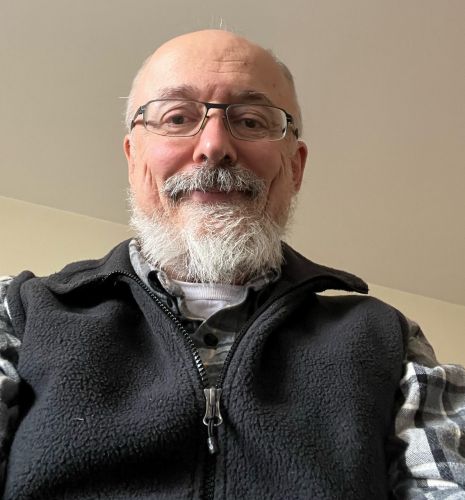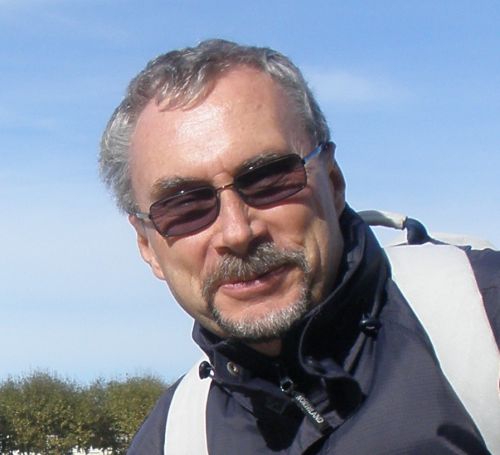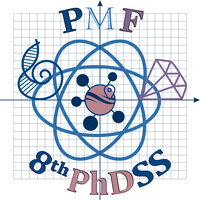Prof. dr. sc. Mladen Victor Wickerhauser: “Superposition and Orthogonality From Polynomials To Wavelets”
Approximation of functions by superposition has a long history in mathematics, leading to powerful methods for solving linear problems and encoding the solutions efficiently. The geometric notion of orthogonality in function spaces leads to fast algorithms for such approximation. Work in combining these ideas has led to diverse families of basic functions from orthogonal polynomials, to trigonometric series, to wavelets and similar time-frequency atoms. There are now well-understood constructions that produce desirable combinations of smoothness, compact support, and low computational complexity. This talk will present an informal survey of the development of adapted decompositions currently used for image compression and accelerated radiation oncology planning. It is intended to be accessible to nonmathematicians who are nonetheless interested in quantitative and computational sciences.
Prof. dr. sc. Mirko Orlić: “How a method developed for the Adriatic-related research became useful to economists”
In the lecture, results obtained in the framework of the Croatian-US project ITHACA, carried out in the middle Adriatic, are presented. Experimental work encompassed measurements with the CTD-probes, thermistors and ADCPs, and the results obtained were compared to the tide-gauge and meteorological data routinely collected in the area. The most important finding represented diurnal internal waves, which travel around the island of Lastovo and occasionally bring about thermocline oscillations having a range of about 30 m. With the aim of explaining the origin of waves that are so large, thermocline oscillations were compared to tidal forcing on the one hand and to wind influence on the other hand. In order to perform the comparison, a new statistical method, called partial wavelet analysis, has been developed, thus enabling two inputs to be connected with an output. It turned out that diurnal internal waves could be resonantly driven either by diurnal tidal oscillations or by diurnal exchange of land and sea breezes. The finding has been corroborated by results of numerical modeling. There are indications that the Lastovo-trapped internal waves support primary production in the area, because the wave-related vertical displacements result in nutrients being transported from the bottom to the surface layer where solar radiation enables organic matter to be produced. As for the partial wavelet analysis, it had been rounded off and presented to a wider scientific community by researchers from the University of Hong Kong and has subsequently found application in several fields of science – for example, in economics.
Prof. dr. sc. Sanja Faivre: “Relative sea-level changes along the eastern Adriatic coast during late Holocene”
Relative sea-level (RSL) change is the sum of effects of processes acting on local, regional and global scales. In order to improve understanding of driving processes of relative sea-level change, reliable high-resolution records from different parts of the world covering different time periods are needed. Studies of preinstrumental periods are based on indicators of relative sea-level change which can provide reliable proxy records. One of the best indicators of relative sea-level change on rocky coasts in the microtidal environment of the Mediterranean are bioconstructions built by alga Lithophyllum byssoides. Under favourable conditions, alga L. byssoides can build rims in a very narrow range at around biological mean sea-level providing good vertical precision. Chronological precision was obtained by the 14C method since the marine radiocarbon reservoir effect, needed for precise calibration of 14C results obtained from carbonates of marine origin, have been previously analysed. High resolution geochronologies obtained for different locations along the eastern Adriatic coast allowed distinction and quantification of local non-linear, regional linear and global scale processes. In the talk, I will present examples of studies of relative sea-level change that we conducted as an interdisciplinary team in the northern and southern Adriatic.
Assoc. prof. dr. sc. Dominik Cinčić: “Crystal engineering of halogen-bonded metal-organic cocrystals”
Over the past 20 years, research into halogen bonding has been intensified in all fields of chemistry, especially in crystal engineering.[1] Studies on halogen-bonded cocrystals have mostly focused on organic systems with perfluorinated compounds as halogen bond donors, and a variety of organic acceptors involving nitrogen atoms and oxygen.[2] The use of halogen bonding to direct the assembly of coordination compounds or building blocks containing heavier elements of Groups 15 and 16 as acceptors in cocrystals remains largely unexplored. Our group is focusing on developing halogen bonding as a tool in crystal engineering of multi-component solids through the involvement of new acceptor and donor types, notably the incorporation of metals into halogen-bonded structures. This presentation will provide an overview of some of the work related to metal-based halogen-bonded cocrystals that we have pursued recently – the potential of chelating and anionic ligands as halogen bond acceptors in crystal engineering based on coordination compounds.[3]
References:
[1] Cavallo, G; Metrangolo, P.; Milani, R.; Pilati, T.; Priimagi, A.; Resnati, G.; Terraneo, G., Chem. Rev., 2016, 116, 2478–2601.
[2] Groom, C. R.; Bruno, I. J.; Lightfoot, M. P.; Ward, S. C., Acta Crystallogr., Sect. B: Struct. Sci., Cryst. Eng. Mater., 2016, 72, 171–179.
[3] Nemec, V.; Lisac, K.; Bedeković, N.; Fotović, L.; Stilinović, V.; Cinčić, D., CrystEngComm, 2021, 23, 3063−3083.
Prof. dr. sc. Mladen Victor Wickerhauser

Prof. dr. sc. Mladen Victor Wickerhauser, born in Zagreb, Croatia, in 1959, holds the degrees of B.S. with Honor (1980) from the California Institute of Technology, and M.S. (1982) and Ph.D. (1985) from Yale University, all in mathematics.
He is currently Professor of Mathematics and Statistics and Professor of Biomedical Engineering at Washington University in Saint Louis, Missouri. He has six U.S. patents and more than 100 publications, including the monograph “Adapted Wavelet Analysis” (1994) and the textbook “Mathematics for Multimedia” (2003,2009). He has also been developing and publishing mathematical software since 1979. His research has long focused on fast approximate algorthms for computation with large datasets, specifically using wavelet analysis. It has found applications in image compression (WSQ for fingerprints), radiation oncology (Monte Carlo dose planning), and pediatrics (auditory screening by EEG). He has advised 6 doctoral students who among themselves have advised another 22 PhDs.
Professor Wickerhauser has been an associate editor for the “Applied Harmonic Analysis” book series as well as five journals, including Glasnik Matematicki (since 1995). He has been a member of the American Mathematical Society (AMS), the Society for Industrial and Applied Mathematics (SIAM), and SPIE – The International Society for Optics, from which he received the 2002 Wavelet Pioneer Award.
Prof. dr. sc. Mirko Orlić

Prof. dr. sc. Mirko Orlić is full professor at the Faculty of Science, University of Zagreb, and fellow of the Croatian Academy of Sciences and Arts. Obtained Ph.D. at the University of Zagreb, visited several oceanographic institutes in Europe, worked as a visiting scholar at the Scripps Institution of Oceanography. Led a number of national and international projects and participated in research cruises in the Adriatic Sea, aboard Croatian, American and German research vessels. Major research interests include physical processes in the sea, atmosphere-sea interaction and methods of data analysis. Authored and co-authored about 100 refereed publications, mostly in international journals, more than 150 conference communications and a book on weather and climate of the Adriatic area. The publications have up to now received more than 2300 citations according to the Web of Science. Served in numerous boards at the university and state levels, participated in the organization of national and international conferences, was editor of Geofizika, of three conference proceedings and of two books, served as guest editor of Journal of Geophysical Research and of Journal of Marine Systems. Member of various professional societies, for example the American Geophysical Union and The Oceanography Society. Obtained the Fulbright Award, the Croatian State Science Award, the Croatian Academy Science Award and the Andrija Mohorovicic Award.
